Telling if a tire is out of round is getting harder and harder by the day. Nowadays tire makers produce original equipment (OE) tires. (OE tires are factory tires that a vehicle is originally equipped with.)
Fix The Problem
An OE tire has to meet specific dimensions and weight requirements, along with longevity expectations, speed ratings and handling performance. This being said, an out of round tire is not common.
Read below to determine if you have an out of round tire.
Just because something is not common, doesn’t mean it can’t happen.
Tweet
Learn what the numbers and letters mean on your tire here.
When looking for this rare occurrence, you should focus on determining if your tire is a perfect circle or not. An out of round tire has a weak spot or spots in the tire. These typically look like a subtle flat patch along the tread of your tire.
This patch or spot can be seen when the vehicle is stationary or parked. This weak spot in your tire will deflect differently from the rest of your tire, while the stronger part of the tire will resist bending and remain stiff, causing vibration.
Please note: If vibration can be felt in the seat, this indicates the problem is located at the rear. If vibration can be felt in the steering wheel this is a sign of a problem that is located in the front.
Advertisements
Out of Round Tire CheckLoud Tire Noise at Highway SpeedsHas your tire been causing your car to shake or vibrate? Or do you have loud tire noises while driving at highway speeds? A bad out of round tire is when the tire is no longer round, this can cause hash vibrations and road noise.
Once a tire is out of round the only thing you can do is replace the tire.
While there are many things that can cause a tire noise such as low tire tread, tire separation, out of balance tires, bent rims, out of round tires is definitely on the list of tire noise. The key is figuring out which noise is causing your harsh car ride.
An out of round tire is also known as tire run out. An out of round tire or tire run out means your tire is no longer perfectly round anymore. This will cause a tire noise or vibration.
There are two different kinds of out of round tire. Read below to understand the two cases.
Highway NoiseThe first and more common of the two is radial runout. Radial runout is when the distance from the center of the rim to your tire tread is different in certain areas of your tire.
Note: The distance from the center of your wheel to your tire tread should be the same distance all the way around.
Radial runout due to its different distances between the center of the rim to the tread of the tire will cause a rather harsh ride such as vibrations, tire noise, steering wheel vibrating/shaking and also bouncing. The worse the tire runout gets the more harsh your ride will be.
The worse the tire runout gets the more harsh your ride will be.
Time will heal most things…
Tweet
When your tire has some form of a rough ride due to tire runout, this harshness will travel through your tires and up your steering shaft. This vibration causes your steering wheel to shake. Your whole entire car may also shake or bounce, but in minor cases you may just experience loud road noise while driving.
The second type of out of round tire/tire runout is lateral runout. Lateral run out is when your tire has flat spots across your tread. This means your tire is weaker in certain spots on the tread of your tire. (Check for suspension issues)
When you put the weight of your vehicle on a tire with lateral runout, your tires will not be able to distribute the weight evenly. This type of runout happens between the center of your tread to the edge of your tread. As your tire spins, one part of your tire could be good and right next to it could be weaker.
This form of out of round tire would cause your tire to lean when it hits that certain spot. This lean is due to the improper weight distribution within that tire. Lateral runout could also cause your tire(s) to move side to side like a wobble.
Can you Balance an Out of Round Tire?Usually you can NOT fix an out of round tire. However, you can maybe improve your ride quality by road force balancing your tire. Before we jump into that, let’s dive into a standard balancing.
A tire should be balanced when you put it on a rim. However, even new tires are usually not perfect. There are some spots that could be slightly heavier than the others. Balancing a tire is simply adding weight to your rim to balance out the weight of your tire.
A tire balancer will find the lighter spot on your tire and tell you to add weight in that certain spot on your rim. Without this procedure being done, you would have a very rough ride.
Having imbalanced tires can also cause more excessive tire wear. Due to excessive tire wear, you can cause a tire to become out of balance. Road force balancing will help a tire that is out of round or has excessive tire run out.
Due to excessive tire wear, you can cause a tire to become out of balance. Road force balancing will help a tire that is out of round or has excessive tire run out.
When you throw your tire up on the balancer a big roller will come down and mash your tire as it spins imitating the road. This detects the weaker points in the tire.
Like your tire, your rim also has a runout, so what the machine does is it will have you put a mark on the tire and a mark on the rim. Once you mark the rim and tire you will need to break your tire down and match the mark on the tire with the mark on the rim.
Make your mark on the world with the time you have.
Tweet
So, let’s say you have a weak point in the rim, the machine will have you put the stronger part of the tire on the weak spot on the rim. This will give you a better ride.
However, this process usually doesn’t fix your problem all the time, it simply improves it. More than likely you would just need to buy a set of new tires if you want to ensure that you have the smoothest ride possible.
More than likely you would just need to buy a set of new tires if you want to ensure that you have the smoothest ride possible.
Can You Fix an Out of Round Tire?
In short the answer is you can NOT fully fix an out of round tire, you may be able to make it a little smoother or better but not entirely fix the issue. Usually this means you need to purchase new tire(s). Get tire discounts by using the link below!
When you have a new set of tires installed you should have a nice, smooth ride. If you are starting to feel vibrations after a couple of thousand miles there is a problem.
If the vibration begins and continues to get worse until the next new set of tires, look into an issue with an imbalance in brake rotors, inspect the pads and rotors and the front struts and/or rear shocks. Also, ensure the tires are balanced, rotated on schedule, and have the shop do a 4-wheel alignment.
If none of these are making a difference and your tire(s) continue(s) to go out of round after a couple thousand miles, you should inspect the wheel (rim) for imperfections, bumps, dents, bends, cracks, not round, etc.
You may also want to look into buying quality tires that are specified for your particular vehicle to fix this issue.
Symptoms of Out of Round TireSymptoms of an out of round tire are similar to an out of balanced tire. So, before you think your tire is out of round, check for a balancing issue.
Due to the rarity of an out of round tire, because of technological advancements in tire creation, more than likely your tire isn’t balanced.
When determining the problem you are facing with your potential out of round tire(s) consider the following:
I am not sure if this is in the right section but here goes. I also tried the search function to see if this topic had been covered but didn't get much help.
I also tried the search function to see if this topic had been covered but didn't get much help.
My 14.00 r20 tires are out of round. I understand this is a fairly common problem with not only large tires but tires that have spent a long time sitting still. This is not only apparent because of the slow speed bumpy ride but also from jacking them up and spinning them. It is causing a very bumpy ride at highway speeds. 47 mph is the worst speed to drive in my truck. 55 is ok but still nowhere near smooth. I know it won't ride like a Cadillac but do expect improvement with the tires rounded out.
My MV is a 923a2 and the CTIS keeps the tires at 55 psi. I have 400 or so miles on it personally and the bumpyness doesn't seem to be going away. I have a mix of Goodyears and Michelins on now.
So driving on the tires doesn't seem to be helping. And let's be honest here, I am somewhat of a cheapskate and a do it yourselfer. I don't want to replace them as used tires may have the same issues and new ones are spendy. I am also guessing that getting them cut may be just as expensive and probably not very local to me.
I am also guessing that getting them cut may be just as expensive and probably not very local to me.
So, any homegrown fixes that may work? I can add Shrader valves to them and run a different pressure if that may help round them back out.
I have a few ideas to try to cut them myself but thought I would see if anybody had success fixing their own issues.
Thanks in advance.
I am about to try the antifreeze balancing, I'm not sure if you're aware of this or not but putting a gallon or so of antifreeze mix in each tire can yield good results, or so I have heard. I haven't tried it yet though so I can't say personally. I have a good buddy that tried the beads and it worked really well for him but it was just on 37" load range D tires.
Before any cutting/shaving experiments. ..
..
Have you checked (radial) run-out immediately after say a 20 mile-trip, when the tire is still warm? How much are we talking - more than 1/4"?
Have you checked tire/wheel balance? I bet there is big part of the problem - and that can be solved.
G.
ThatXJGuy said:
I am about to try the antifreeze balancing, I'm not sure if you're aware of this or not but putting a gallon or so of antifreeze mix in each tire can yield good results, or so I have heard. I haven't tried it yet though so I can't say personally. I have a good buddy that tried the beads and it worked really well for him but it was just on 37" load range D tires.
Click to expand...
Balancing is my second concern, far behind the out of round issue. I can feel (and see) my truck rocking and rolling at 5 mph.
I didn't like balancing beads in my last truck. They clumped up if the tire had moisture in it plus if I checked the air pressure a bead would always get stuck in the valve allowing it to leak. I always had to have air handy just to check them to blow the beads out of the valves.
Get them shaved! I tried balancing, etc with no improvement. Shaving, buffing, grinding the tires is the only thing that corrected the shake on my truck. I ran almost 1000 miles at varying air pressures hoping to wear the tires even, but only shaving corrected the problem. Even a tire which had NEVER been mounted on a truck was almost 3/8 inch out.
Going to do this on my other truck when time permits.
gringeltaube said:
Before any cutting/shaving experiments.
..
Have you checked (radial) run-out immediately after say a 20 mile-trip, when the tire is still warm? How much are we talking - more than 1/4"?
Have you checked tire/wheel balance? I bet there is big part of the problem - and that can be solved.G.
Click to expand...
Running through town at slow speed I have a lot of wobble. Then I have about 40 miles of highway with a lot of bucking at certain speeds (47ish is the worst). Then slow speeds to the final location give me the same wobble. Temps here have been in the 60° range so I would imagine they get plenty warm. Ambient temperature and distance driven really show no difference in the tire feel.
It seems that I have atleast 1/2" of wobble all around the truck.
I don't think tire balance would cause much wobble at 5mph.
If the front tires sat flat for a period of time I would not want to drive on them.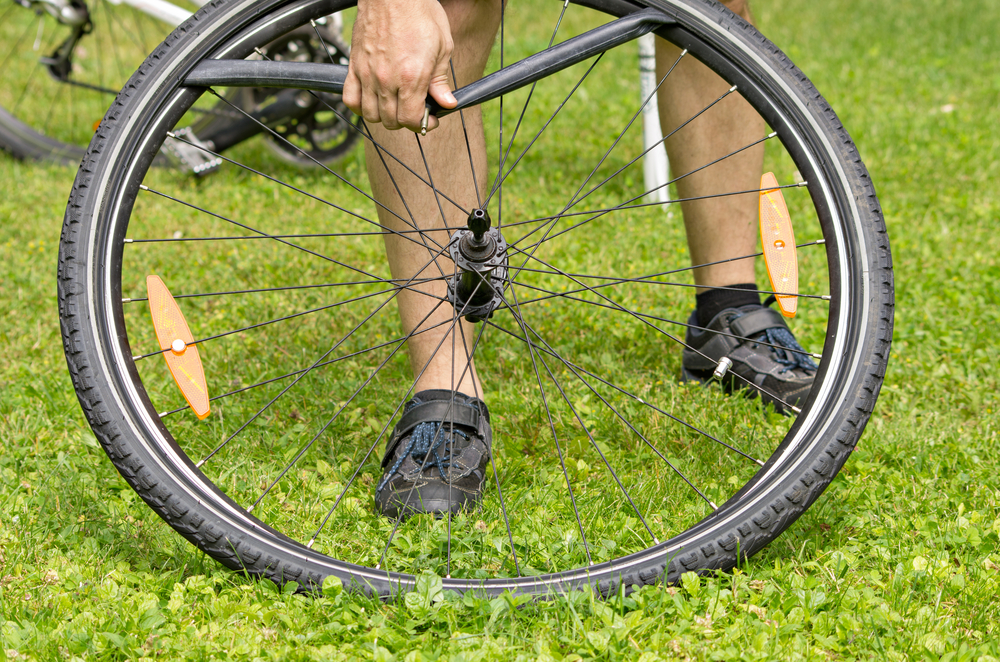 The older style Michelins are notorious for blowing out. Especially if the sidewalls are really wavy. What are the date codes on the tires?
The older style Michelins are notorious for blowing out. Especially if the sidewalls are really wavy. What are the date codes on the tires?
Jason O said:
Get them shaved! I tried balancing, etc with no improvement. Shaving, buffing, grinding the tires is the only thing that corrected the shake on my truck. I ran almost 1000 miles at varying air pressures hoping to wear the tires even, but only shaving corrected the problem. Even a tire which had NEVER been mounted on a truck was almost 3/8 inch out.
Going to do this on my other truck when time permits.
Click to expand...
Did you do it yourself or have a shop do it?
If you did it, how?
If you had a shop do it, how much did it run you (if you don't mind me asking)?
Suprman said:
If the front tires sat flat for a period of time I would not want to drive on them.
The older style Michelins are notorious for blowing out. Especially if the sidewalls are really wavy. What are the date codes on the tires?
Click to expand...
I have Goodyears on the front. I blew out a Michelin on the front and swapped both out for Goodyears.
Even if I bought new tires I may still have the same problem.
I had a shop shave the tires. The procedure was performed with the tires on the truck. It took about half a day, im thinking I paid around $40 per tire.
I'll post a pic later.
I like the goodyears I think they ride a little nicer than the Michelin XZL's though the Michelins are probably better for offroad traction.
Suprman said:
I like the goodyears I think they ride a little nicer than the Michelin XZL's though the Michelins are probably better for offroad traction.
Click to expand...
I like the Goodyears because they do not have directional tread. Two of my Michelins are backwards and it drives my OCD nuts.
Most of my wobble comes from the front where the Goodyears are though.
Well, if any of the front tires (after warmed up) still had a run-out of 3/8" or more I would better NOT run them on the steer axle - shaved or not!
G.
I want to learn more about the A2 variant so I went and did some sleuthing.
I have a lot to say,
..
Does the TM say 55PSI is OK for normal, on road use, at speed?
I didn't think so.
The -10 TM says;
HWY MODE
The highway tire pressure selector is the normal operating mode of CTIS. The HWY mode (Figure 1, Item
is 90 psi (621 kPa) (80 psi (552 kPa) for M936A2 wrecker). If a lower tire pressure mode had been selected the last time the vehicle was operated, CTIS will automatically begin to inflate to the highway setting.
and
Hwy Mode. CTIS highway selection is automatically programmed HWY (Figure 1, Item 4) when you start the engine.
and
Highway (HWY)
(M939A2 Series Vehicles)
Tire pressure selector is the normal operating modes of CTIS.
The highway mode is automatically set each time the engine is started.
So the truck was designed to run at 90 PSI normally, and you are at 55 so problem #1.
This needs to be addressed immediately.
55 PSI? ...and what is the "factory recommended" normal tire pressure called
out at as written right on the tire? It is ONE HUNDRED PSI COLD, right? But
the TM is clear, 90 PSI so it overrules the Mfg in my book so 90 it is.
You are WAY under pressure running at ONLY 45%? of what the TM says
they want the tire pumped up to at speed? Why??? Because the CTIS
has it there? I don't care what the CTIS is doing read the TM, and
you said you were driving at 55MPH, I assume this is not off road
and you are on-road in normal conditions, 90 PSI is where every
tire needs to be at, not a penny less.
Fix the CTIS but,
First thing I would do is disable the CTIS 100% and fill all tires manually to 90PSI.
Go back in 1 hour and recheck pressures, looking for leakers.
MAX air all of them up to NINETY PSI COLD, not a penny less
just like the TM engineers designed the truck to run at
and let it sit for a couple of days, but move the truck so the tires spin
only 90* twice a day to try to ensure your not sitting on a flat spot.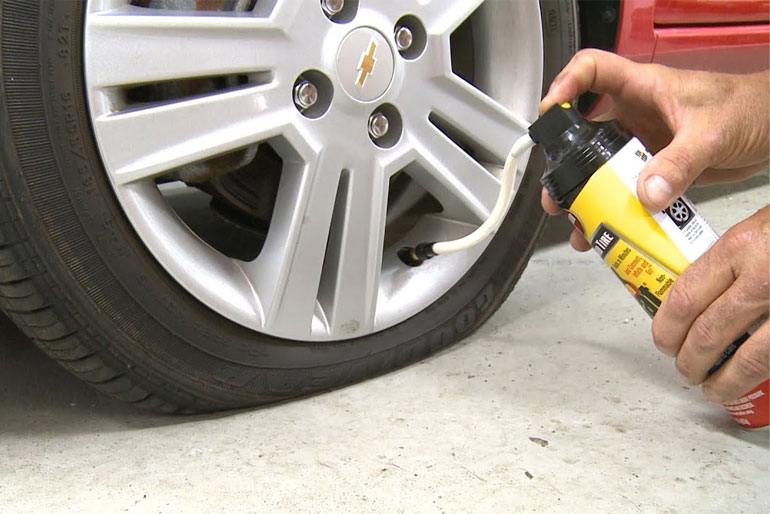
If you can see where a flat spot is after full pressure throw the tire away!
Side Note;
I have personally witnessed big deep cracks in these tires and flat
on the ground. I filled it w/ air to 100 and the crack disappeared!!! Scary!
Freaking CRAZY but I saw it w/ my own eyes. (Not on my truck,
on 7 like trucks I towed once off base.)
End Side Note:
After a couple of days don your driving gloves, make sure spare is aired
up and chain-fall and irons and jack are onboard (or carry phone
number to the local mobile tire repair guy!) BIG $$$, and
filler-up and take it for a spin for a couple of hours @ 55 MPH,
down the freeway, w/ a couple ton onboard, non stop and report back
to us.
(Check pressure in EVERY TIRE twice a day, if a small leak
is proven AIR IT UP to 90 psi. Not an RCH less.) I bet you
see a difference.
If your worried about anything blowing and you not being
able to handle it, sell it, or go buy new steer axle tires, but that is
no assurance you will not have a blow out leaving road
alligators in your wake and the truck dropping 10"-12" in a split
second, at speed, and that rim hitting the bead w/ a flopped
over tire and the steering wheel being tired to be yanked & pried
out of your control, pray not in an opposite turn as in a right,
front flat, in a left turn.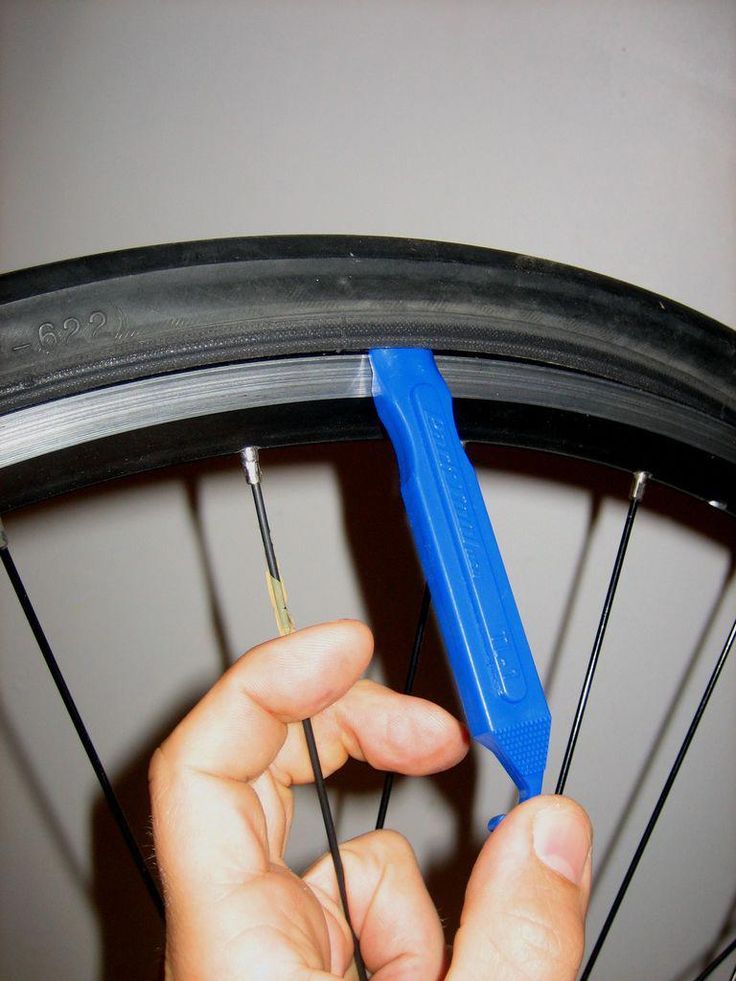 No granma's mittens, no slippery material gloves,
No granma's mittens, no slippery material gloves,
only good worn in slightly dirty leather gloves or non slip gloves.
NO SLIPPERY GLOVES / HANDS EVER driving these beasts!
Hands at 9- O:Clock and 3- O:Clock holding VERY firm, like
you could have a blow out at any minute, because you could,
even w/ new tires. Certainly the chances are slim to none
w/ new tires but the possibility is there.
These are tactical military vehicles, comfort was never an option.
Wearing helmets was mandatory too!
If you still have a problem shave away, but I don't think I would
shave an old steer axle set of tires, just get anew. I myself
am saving for a brand new set of steer axles tires. PUNT!
The tires are designed to be retreaded. There should be plenty of meat if you want to take a bit off the tread area.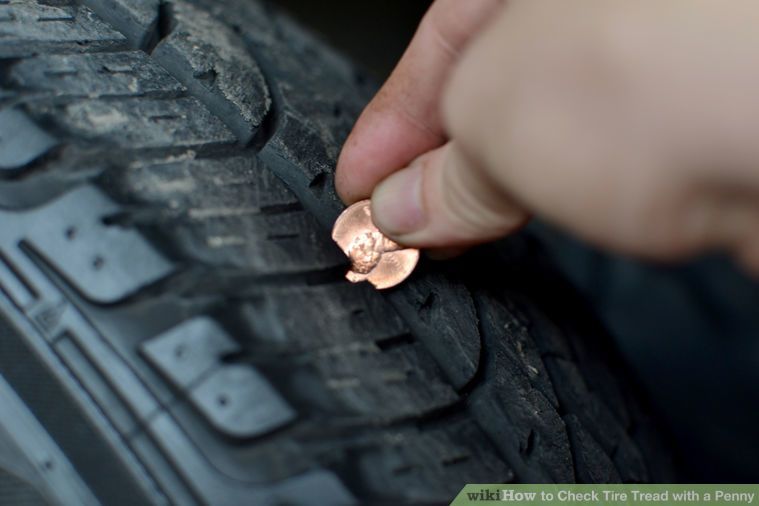 A crack isn't going away no matter how much pressure you put in it. I think 100 psi in an older tire might be pushing it a little. You would have a hard ride. I try to stick with 65psi or so.
A crack isn't going away no matter how much pressure you put in it. I think 100 psi in an older tire might be pushing it a little. You would have a hard ride. I try to stick with 65psi or so.
Artisan said:
I want to learn more about the A2 variant so I went and did some sleuthing.
not a mean spirit within.
I have a lot to say,..
Does the TM say 55PSI is OK for normal, on road use, at speed?
I didn't think so.The -10 TM says;
HWY MODE
The highway tire pressure selector is the normal operating mode of CTIS. The HWY mode (Figure 1, Item
is 90 psi (621 kPa) (80 psi (552 kPa) for M936A2 wrecker). If a lower tire pressure mode had been selected the last time the vehicle was operated, CTIS will automatically begin to inflate to the highway setting.
and
Hwy Mode. CTIS highway selection is automatically programmed HWY (Figure 1, Item 4) when you start the engine.
and
Highway (HWY)
(M939A2 Series Vehicles)
Tire pressure selector is the normal operating modes of CTIS.
The highway mode is automatically set each time the engine is started.So the truck was designed to run at 90 PSI normally, and you are at 55 so problem #1.
This needs to be addressed immediately.55 PSI? ...and what is the "factory recommended" normal tire pressure called
out at as written right on the tire? It is ONE HUNDRED PSI COLD, right? But
the TM is clear, 90 PSI so it overrules the Mfg in my book so 90 it is.You are WAY under pressure running at ONLY 45%? of what the TM says
they want the tire pumped up to at speed? Why??? Because the CTIS
has it there? I don't care what the CTIS is doing read the TM, and
you said you were driving at 55MPH, I assume this is not off road
and you are on-road in normal conditions, 90 PSI is where every
tire needs to be at, not a penny less.
Fix the CTIS but,
First thing I would do is disable the CTIS 100% and fill all tires manually to 90PSI.
Go back in 1 hour and recheck pressures, looking for leakers.
MAX air all of them up to NINETY PSI COLD, not a penny less
just like the TM engineers designed the truck to run at
and let it sit for a couple of days, but move the truck so the tires spin
only 90* twice a day to try to ensure your not sitting on a flat spot.
If you can see where a flat spot is after full pressure throw the tire away!Side Note;
I have personally witnessed big deep cracks in these tires and flat
on the ground. I filled it w/ air to 100 and the crack disappeared!!! Scary!
Freaking CRAZY but I saw it w/ my own eyes. (Not on my truck,
on 7 like trucks I towed once off base.)
End Side Note:After a couple of days don your driving gloves, make sure spare is aired
up and chain-fall and irons and jack are onboard (or carry phone
number to the local mobile tire repair guy!) BIG $$$, and
filler-up and take it for a spin for a couple of hours @ 55 MPH,
down the freeway, w/ a couple ton onboard, non stop and report back
to us.
(Check pressure in EVERY TIRE twice a day, if a small leak
is proven AIR IT UP to 90 psi. Not an RCH less.) I bet you
see a difference.If your worried about anything blowing and you not being
able to handle it, sell it, or go buy new steer axle tires, but that is
no assurance you will not have a blow out leaving road
alligators in your wake and the truck dropping 10"-12" in a split
second, at speed, and that rim hitting the bead w/ a flopped
over tire and the steering wheel being tired to be yanked & pried
out of your control, pray not in an opposite turn as in a right,
front flat, in a left turn. No granma's mittens, no slippery material gloves,
only good worn in slightly dirty leather gloves or non slip gloves.
NO SLIPPERY GLOVES / HANDS EVER driving these beasts!Hands at 9- O:Clock and 3- O:Clock holding VERY firm, like
you could have a blow out at any minute, because you could,
even w/ new tires.Certainly the chances are slim to none
w/ new tires but the possibility is there.These are tactical military vehicles, comfort was never an option.
Wearing helmets was mandatory too!If you still have a problem shave away, but I don't think I would
shave an old steer axle set of tires, just get anew. I myself
am saving for a brand new set of steer axles tires. PUNT!Click to expand...
I just skimmed the TM and it does say 70psi for the front and rear tires (the 939 series with 11x20 tires says 90psi). I guess I got mixed up with the 55mph speed limit or something. Last time I worked on one of the tires I manually aired it up to 60 psi and let the CTIS system have it from there.
But in all honestly I have not checked the tire pressure manually. Add that to my list.
As far as changing a tire or having a blowout, been there and done that on both counts. Not a problem at all.
Last edited:
dawico said:
I just skimmed the TM and it does say 70psi for the front and rear tires (the 939 series with 11x20 tires says 90psi).
I guess I got mixed up with the 55mph speed limit or something. Last time I worked on one of the tires I manually aired it up to 60 psi and let the CTIS system have it from there.
But in all honestly I have not checked the tire pressure manually. Add that to my list.
As far as changing a tire or having a blowout, been there and done that on both counts. Not a problem at all.
Click to expand...
That's all fine and dandy but let's try to fix the flat spot issue first,
then after a few months if you want to let a lil air out that is
your prerogative. (Not recommended)
Pump those puppies up to MAX and let them sit.
Artisan said:
That's all fine and dandy but let's try to fix the flat spot issue first,
then after a few months if you want to let a lil air out that is
your prerogative.(Not recommended)
Pump those puppies up to MAX and let them sit.
Click to expand...
Will do. I am about to go out of town for a week for Christmas so I will air them up and see if it helps. I would have to disable the CTIS to keep them up though. If a week at full pressure makes any difference then I will persue that option. I honestly don't hold out much hope but I will try it.
Thanks.
There's one important factor you'all are leaving out: load on the truck. The military pressure recommendations are for maximum payload (the safe way to set spec) and the pressure stamped on the tire is at rated max payload. That does not mean you have to run those pressures.
Running max pressure at reduced truck payload results in the middle of the tread wearing out much faster. The tires will be bald in the center and tread left on the outer edges. The tire footprint will be much smaller resulting in poorer braking on the highway, and much reduced float offroad. You will sink is the soft stuff. There should be road contact all across the tire face. Of course CTIS takes care of that but it does not know what load you have. That's where human decision is important. Lastly, the ride will be rough at max tire inflation. Reduced pressure will make the ride much more comfortable and reduce shock load on the tires. Most tire manufacturers will publish a chart for load (usually percent actual load compared to maximum) vs desired tire pressure. Keep in mind that the front tires and rear tires may have considerably different loads on them and should be inflated to compensate. Rolling radius should be matched front to rear, too, or your drivetrain will bind up in 4wd. That is, the front tires and rear tires should roll the same revolutions per distance. Rolling radius is wheel center to ground dimension.
The tires will be bald in the center and tread left on the outer edges. The tire footprint will be much smaller resulting in poorer braking on the highway, and much reduced float offroad. You will sink is the soft stuff. There should be road contact all across the tire face. Of course CTIS takes care of that but it does not know what load you have. That's where human decision is important. Lastly, the ride will be rough at max tire inflation. Reduced pressure will make the ride much more comfortable and reduce shock load on the tires. Most tire manufacturers will publish a chart for load (usually percent actual load compared to maximum) vs desired tire pressure. Keep in mind that the front tires and rear tires may have considerably different loads on them and should be inflated to compensate. Rolling radius should be matched front to rear, too, or your drivetrain will bind up in 4wd. That is, the front tires and rear tires should roll the same revolutions per distance. Rolling radius is wheel center to ground dimension. Obviously that changes with load and pressure.
Obviously that changes with load and pressure.
I routinely regroove tires (Michelin XL's, 14.5 x 20). They are regroovable. Each state has specifications on how much rubber has to remain above the cords to be legal. If you think about the tire strength, it's the cords and what is inside them that holds the pressure. The rubber outside the cords is in tension and holds very little pressure because rubber stretches by it's nature. The concern is protection of the cord from the elements and road hazards. Regroove to your hearts content and get more mileage out of those tires.
Truing tires can be done if you find some place that still has the machine. I personally use a rubber cutting disk as used by hotrodders to create road slicks. They cut away most of the rubber from a tire to lighten it and put more rubber on the pavement. The disk looks like a very aggressive sanding disk. By jacking up one wheel at a time and rotating the tire just above the flat surface, high spots will drag and mark themselves.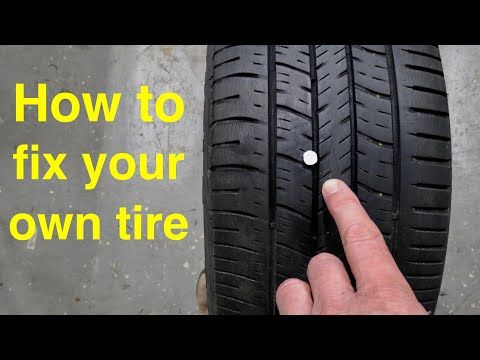 This is a time consuming process.
This is a time consuming process.
Once the high spots are cut off the tire will be 'true' but probably not balanced better.
Yes, some tires were meant to be retreaded, some not. I think the important issue is regroovability. Do the tires say 'regroovable"?
Bob
Last edited:
THANK U Bob, I am listening. I wonder if the TM's address this and I did not read enough?
Bob penned;
"Most tire manufacturers will publish a chart for load (usually percent actual load compared to maximum) vs desired tire pressure."
Great!
Now I get to go on a 14:00R20 tire pressure "chart" hunt.
Maybe someone will (hopefully) beat me to it and find it before me! HA!
Vladimir Gavrilov
Estimated reading time: 3 minutes
5428
Nor Gal / Shutterstock.com
Tire damage is common in the spring. Roadsides are littered with thousands of bent nails, self-tapping screws and other sharp objects that have accumulated under the snow during the three winter months. They are blown by the wind onto the roadway and fall under the wheels of cars. Then the air leaves the tire, and a signal appears on the dashboard that the wheel needs to be repaired. But where can this be done during a pandemic, when many workshops are closed and do not accept customers? Motorists have to manage on their own and fix damage with improvised means.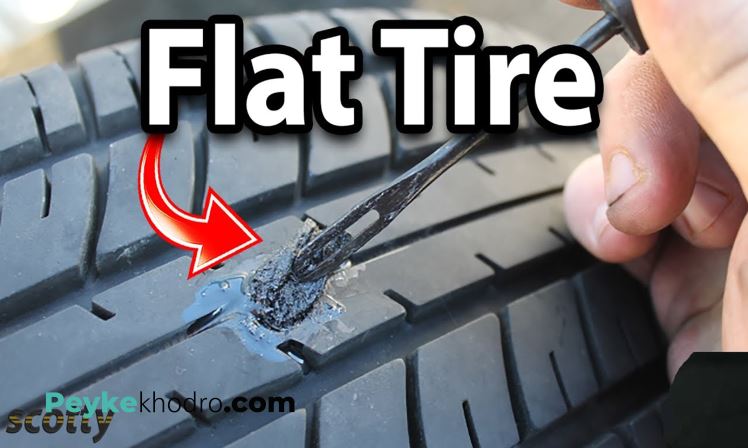 nine0005
nine0005
There are two alternatives to visiting a tire shop. If the damage is not radical, there are no cuts on the rubber and hernias on the sidewalls, and only an old nail sticks out in the tread, then this puncture can be repaired by yourself.
A couple of repair kits are available from parts stores. They include a round notched rasp, an awl with a holder, several pieces of tourniquet and glue. Pliers and a sharp knife will also come in handy. With this simple economy, you can return the wheel to working capacity even without removing it from the car and disassembling it. nine0005
First, we study the puncture site. It usually emits a hiss. More precisely can be determined using a soap solution. If you apply it to the tread, then the outgoing air will inflate bubbles. We mark the hole with chalk and prepare for repairs.
First of all, carefully clean the surface of the tire with a cloth and apply any detergent. Then we unscrew the nipple cap and release the pressure to 0.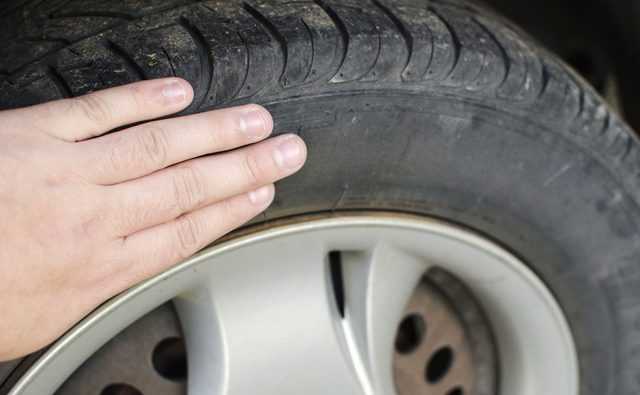 5-0.9 atmospheres. With pliers we hook a sharp nail in the tire and pull it out, and then with the help of a rasp we process the hole, bore it, giving it a round shape in diameter. After completing this procedure, we leave the rasp in place to prevent a further drop in pressure, and we take on the preparation of the flagellum, which plays the role of a miniature patch. nine0005
5-0.9 atmospheres. With pliers we hook a sharp nail in the tire and pull it out, and then with the help of a rasp we process the hole, bore it, giving it a round shape in diameter. After completing this procedure, we leave the rasp in place to prevent a further drop in pressure, and we take on the preparation of the flagellum, which plays the role of a miniature patch. nine0005
First, remove the flagellum from the package and insert it into a special hole with a groove on the mounting awl. The flagellum must pass into it to the middle of its length. And then we generously lubricate the flagellum with glue, take out the rasp, insert the awl into the hole, screw the sting with the flagellum into it until it sinks to 2/3 of the length, and take out the awl with a sharp movement. The flagellum remains inside. The deed is almost done. Next, cut off the ends of the tourniquet with a knife and inflate the tire to 2 atmospheres. The glue will dry soon, and with such a mini-patch you can ride for at least a few months until the end of the summer season. nine0005
nine0005
The second repair method is similar to the first. Only it will be useful when there is no flagellum at hand.
We stock up on a screwdriver, sealant and an ordinary self-tapping screw, which should take the place of the flagellum and turn into a patch. After removing the rusty nail, for fidelity, you can process the hole with a rasp, if, of course, it is found in the trunk. And in its absence, you can start repairing tires without it. We simply insert the self-tapping screw into the hole and screw it with a screwdriver up to the cap, as if into a wooden or plastered wall. The main thing is that the self-tapping screw should be one and a half or two glad thicker than a nail. Then it will fit snugly into the hole and be able to hold pressure, and the sealant will close minor damage inside the rubber. nine0005
This version of the patch will keep the pressure noticeably worse than the flagellum, however, with its help, you can restore the functionality of the tire and drive for about a week or more until the tire pressure drops below 1. 5 atmospheres. Then you need to re-inflate the wheel. In principle, with periodic pumping on such a wheel, you can ride more than one month.
5 atmospheres. Then you need to re-inflate the wheel. In principle, with periodic pumping on such a wheel, you can ride more than one month.
If the damage is more significant, then you can put a spare tire and order a new wheel with home delivery. In addition, you can go further out of town, where on small roads and in small villages, tire shops are still working without switching to self-isolation mode. nine0005
car tips
tiresNext article
Media news2
Monday, August 15, 2016 03:18:03 PM Europe/Moscow
Deformation is a change in the size or shape of a solid body due to external forces. Applicable to tires, two types of deformation can be distinguished:
Functional deformation is one of the duties that a modern tire must fulfill. Namely, to deform, reducing the vibration and noise impact on the car and the driver, which occurs when the tire rolls on the road surface. The flexibility of the tire structure, as well as the correct pressure inside, allow the tire to perform this function without problems, while making a huge amount of deformation per unit of time without negative consequences.
The flexibility of the tire structure, as well as the correct pressure inside, allow the tire to perform this function without problems, while making a huge amount of deformation per unit of time without negative consequences.
Critical deformation is precisely characterized by the fact that its consequence may be the complete or partial destruction of the tire, excluding its further use. Critical deformations include:
- warehouse;
- arising from prolonged standing of the car;
- resulting from driving with a pressure lower than recommended;
- shock with sidewall destruction.
Tire deformation due to improper storage
The damage that a tire receives when the tire storage rules are violated is a fairly common operational damage that is not a consequence of the tire performing its functions. Among this type of critical deformations, the following tire damage occurs:
- bead ring fracture that occurs during long-term storage of herringbone tires. Unfortunately, storage in this way is a very common practice, although tire manufacturers recommend using it only for the limited time needed to transport tires. A bead ring fracture is a non-repairable defect, and it is not recommended to install such tires on rims. nine0005
Unfortunately, storage in this way is a very common practice, although tire manufacturers recommend using it only for the limited time needed to transport tires. A bead ring fracture is a non-repairable defect, and it is not recommended to install such tires on rims. nine0005
How to avoid:
New tires must be carefully inspected upon receipt. In addition, during long-term storage, it is recommended to put the tires on the tread, in a vertical position, using special racks that do not damage the tires.
- tire curvature when stacked . This method of storage is still common, and it is also especially dangerous for those tires that ended up at the bottom of the stack. And the higher this design, the more the lower tires suffer. Such storage can cause the tire to warp internally, which in turn can cause the tire to side-slip, as well as uncontrolled imbalance or vibration. nine0005
How to avoid :
Buy tires from professional tire shops and avoid stores with huge stacks of tires (more than four tires high) on the sales floor. Since the internal curvature of the tire cannot be seen with a visual inspection, and only a balancing machine will help identify the first signs of tire problems. Tire storage by the owner should also avoid stacking tires, even if the number of tires is limited to four.
Since the internal curvature of the tire cannot be seen with a visual inspection, and only a balancing machine will help identify the first signs of tire problems. Tire storage by the owner should also avoid stacking tires, even if the number of tires is limited to four.
Tire deformation that occurs when the car is parked for a long time
Few people know that tires can be damaged and from a long stay in an upright position , with air inside. As a rule, this is possible when the car is parked in one place. This position deforms the tire, depriving it of a perfectly round shape. When driving on such a tire, vibrations and noise may occur. Non-repairable damage to the internal structure of the tire is also possible, especially for tires that have been in operation for a long time. nine0005
How to avoid:
The technical documents recommend limiting such extended stays to two days for fully loaded vehicles and ten days for unladen vehicles. If you need a longer parking of cars, you should reduce the load on the tires using stands or moving the car.
If you need a longer parking of cars, you should reduce the load on the tires using stands or moving the car.
Tire deformation due to low pressure driving
One of the most common forms of critical deformation is irreversible tire change , which occurs due to the operation of a tire with low internal pressure. Due to this insufficiency, normal working deformations become redundant, and the tire walls, not designed for excessive bending, begin to heat up beyond measure. Thus, the destruction of the tire itself begins. First, the sealing layer is destroyed: it begins to bulge on the inner surface of the junction of the sidewall and the treadmill, then it peels off, and a rubber coating is formed. Then the sidewall, exposed to the carcass threads, begins to crack, and the air leaves the tire. Further driving on such a tire can lead to a complete separation of the sidewall from the tread. nine0005
How to avoid:
Monitor pressure. In addition to checking, you need to regularly change the valves, repair tires in a timely and efficient manner, and avoid driving on damaged tires. Since all this can lead to a slow loss of pressure and to the appearance of a critical deformation of the tire.
In addition to checking, you need to regularly change the valves, repair tires in a timely and efficient manner, and avoid driving on damaged tires. Since all this can lead to a slow loss of pressure and to the appearance of a critical deformation of the tire.
Tire deformation under shock impact load
If the tire gets into a hole , hits a foreign object on the road, deformation of the tire may occur, which can destroy the product at a time. If this happens at high speed, and the edges of the pit or object are sufficiently hard and sharp, then the chances of an instant destruction of the tire increase significantly. In such a situation, the sidewall of the tire is pinched between the rim and the surface, for example, in pits. The influence of other factors (speed, aggressiveness of the obstacle) leads to the appearance of an impact force that breaks several threads of the frame. The weakened part of the sidewall of the tire is easily deformed by internal pressure, and a hernia appears.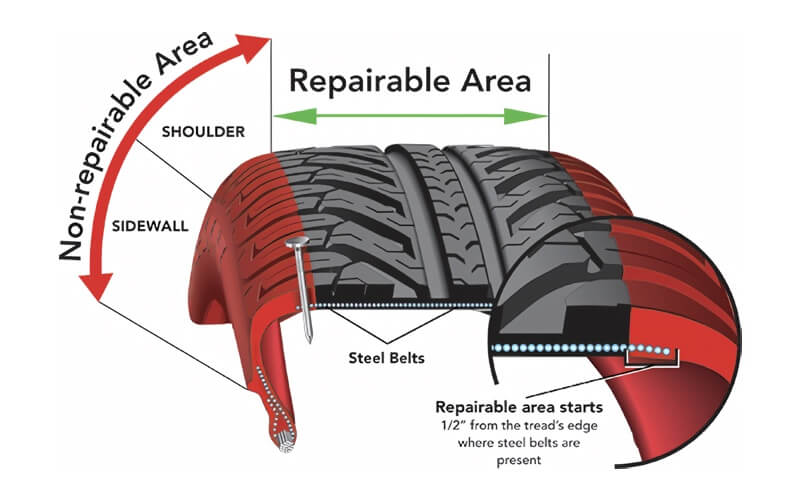 nine0052 Further operation of the tire is not recommended . It is worth noting that sometimes the rupture of the carcass threads is accompanied by a rupture of the inner and outer layers of the sidewall of the tire, leading to a loss of pressure, which, of course, excludes further repair of the tire and its use.
nine0052 Further operation of the tire is not recommended . It is worth noting that sometimes the rupture of the carcass threads is accompanied by a rupture of the inner and outer layers of the sidewall of the tire, leading to a loss of pressure, which, of course, excludes further repair of the tire and its use.
How to avoid:
Carefully reduce your speed when driving on poorly paved sections of the road, avoid hitting curbs and other foreign objects. If bad roads are a fairly common occurrence, then it will not be out of place to pay attention to technologies that protect tires from damage. For example, Michelin uses IronFlex technology for some of its models (MICHELIN Energy XM2, X-Ice North 3, X-Ice 3), which reduces the chance of damage to the sidewall of the tire during shock deformation. For the same purpose, a double carcass is used for off-road tires of the Latitude family, which also reduces the likelihood of premature tire failure due to carcass damage.